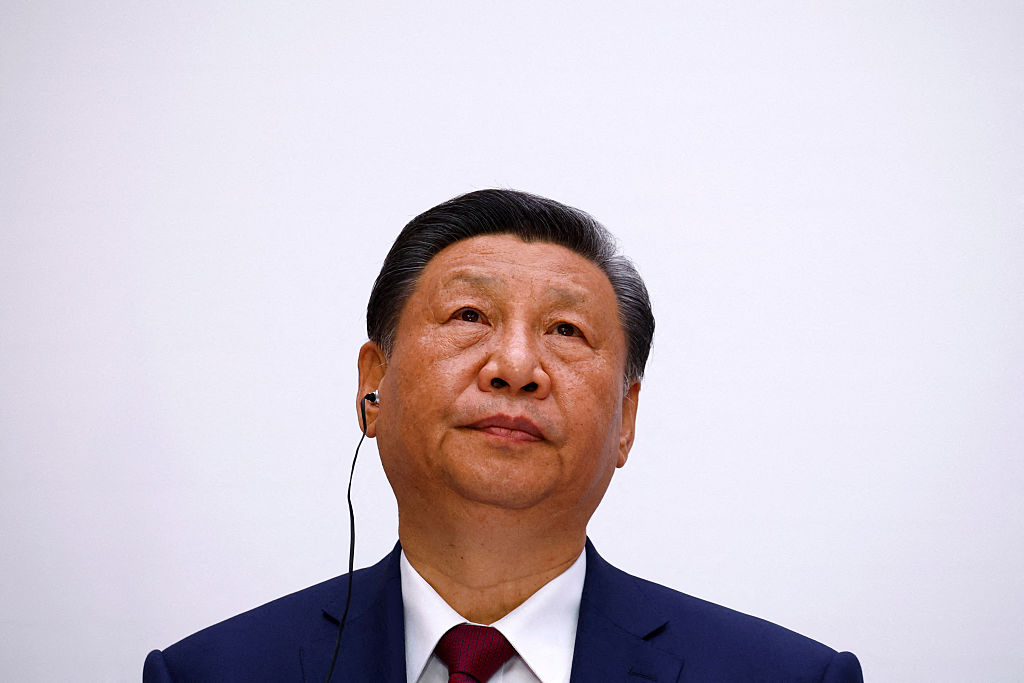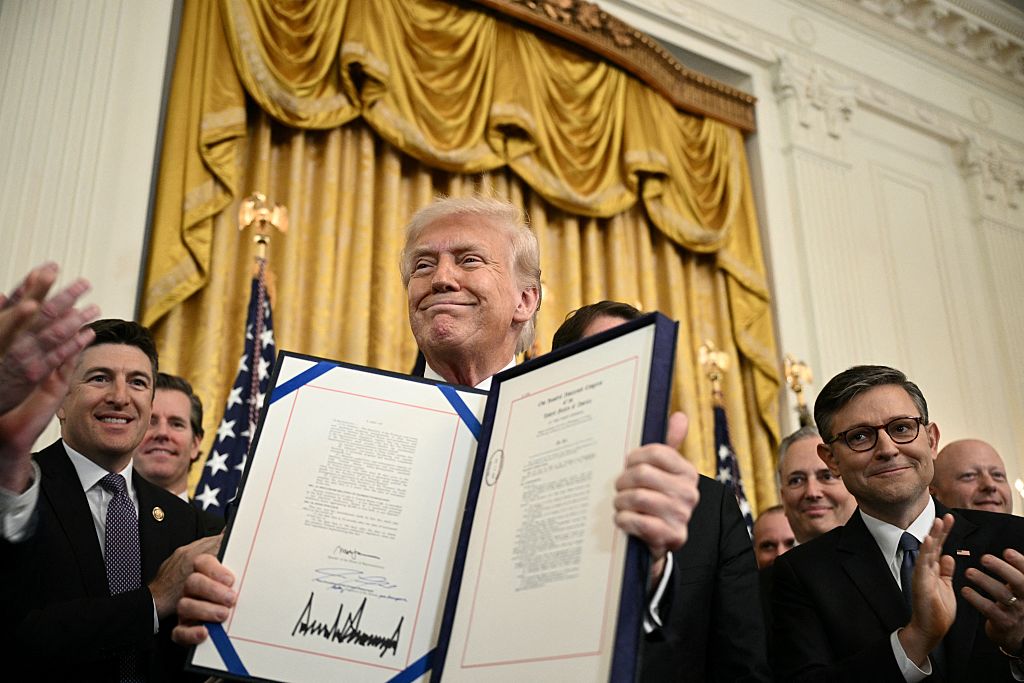China takes the lead in the global AI tech race – can the US charge ahead?
The idea that China could pull ahead of the United States in terms of technological prowess once seemed fanciful. That’s no longer the case

Is China already ahead on tech?
It’s there or thereabouts. A technology index by researchers at Harvard, published last month, ranked 25 countries across five sectors: artificial intelligence (AI), semiconductors, biotechnology, space and quantum technology. It placed the US first in all categories, but with China breathing down its neck in second. By contrast, a recent study by the Australian Strategic Policy Institute found that China has already pushed ahead decisively in crucial areas. The think tank found that, back in 2003-2007, the US led China in 60 of 64 frontier technologies – such as AI and cryptography – while China led the US in just three. By 2019-2023, the position had reversed. China now leads in 57 of 64 key technologies, and the US leads in only seven.
Where does China excel?
The world’s largest and most innovative producers of electric vehicles (BYD), EV batteries (CATL), drones (DJI) and solar wafers (LONGi) are all Chinese start-ups, none more than 30 years old. Chinese firms are competing aggressively in other innovative sectors in which the US has long been dominant: aviation, telecoms, robotics, nuclear power and fusion research, quantum computing, biotech and pharma, and solar energy. For now, the US and its allies (including Taiwan) maintain a narrow lead in advanced microchips and AI, says Christopher Mims in The Wall Street Journal – but the gap is closing faster than ever. China’s domestic chipmaking network still lags, but the idea that it is far behind, or will remain so, “flies in the face of history”, says industry analyst Patrick Moorhead. It’s only a matter of time, he argues, before China will be in a position to source everything it needs in order to match or exceed the capabilities of firms such as Taiwan’s TSMC and the US’s Intel.
What about AI?
The “DeepSeek moment” in January, when the Chinese company unveiled a large language model (LLM) almost matching the capabilities of OpenAI’s ChatGPT, but for a fraction of the investment, confirmed that China is “snapping at the heels” of the US, says The Economist. It was a startling moment, but obscures the fact that China’s policymakers are making a different kind of strategic race, focusing on practical applications of AI in factories and for consumers. US firms focus on the model, but Chinese players emphasise practically applying AI, says Zhang Yaqin, a former boss of Baidu, now at Tsinghua University – the same pattern by which China stole a lead in e-commerce and e-payments. At the same time, China is lavishing state support on the entire AI tech sector, in chips and data centres and energy, says Kyle Chan of the RAND Corporation.
MoneyWeek
Subscribe to MoneyWeek today and get your first six magazine issues absolutely FREE

Sign up to Money Morning
Don't miss the latest investment and personal finances news, market analysis, plus money-saving tips with our free twice-daily newsletter
Don't miss the latest investment and personal finances news, market analysis, plus money-saving tips with our free twice-daily newsletter
What is China doing right?
China has advantages that previous challengers to US hegemony do not. It has a huge domestic market, so it can incubate firms within its borders before they go global. Although it remains dependent on the US and other nations for many raw materials and specialised goods, it has a decades-long strategy of pursuing self-sufficiency in high-tech sectors. That means it’s producing an ever greater slice of all it needs. Education is another example of long-term commitment to strategy and execution, says Lee Jong-Wha on Project Syndicate. Superior higher education is a proven driver of success in the struggle for global economic, technological and geopolitical leadership. China has invested in building world-class universities such as Zhejiang University, modelled on Stanford, which has helped transform Hangzhou into a Chinese Silicon Valley.
The US, by contrast, is “actively undermining its elite institutions of higher education – not least by alienating foreign talent”. The current administration’s policies (suing colleges over ideological misdemeanours and discouraging foreign students) are spectacularly misconceived. Many of the world’s most valuable firms, including Google, Meta, Nvidia, and Tesla, were built by graduates of elite US universities, and many were not American. Over half of the US billion-dollar start-ups have at least one immigrant founder, and a quarter were launched by individuals who first arrived in the US as international students.
What should the US do?
Most fundamentally, say David Autor and Gordon Hanson in The New York Times, US policymakers need to stop looking in the rear-view mirror and start focusing on the road ahead. The US still frames its strategic competition with Beijing with reference to the first “China Shock” of 1999-2007, when China’s transition to a market economy helped erase nearly a quarter of all US manufacturing jobs. But that’s history, and the US now risks fighting the last war. What’s coming now is “China Shock 2.0”, and it will be far more profound and long-lasting. The original, manufacturing shock ebbed as China ran out of low-cost labour; “China Shock 2.0 will last for as long as China has the resources, patience and discipline to compete fiercely.”
How should the US respond?
The best response to that threat is for the US to act in unison with commercial allies such as the EU, Japan, Canada, the UK, Australia and South Korea, say Autor and Hanson. At the same time, Chinese firms should be encouraged to set up production facilities in the US and elsewhere. That sounds counter-intuitive, but it’s similar to the way China once encouraged Western companies to do the same in China as a way of speeding up technology transfer. Chinese policymakers refer to this as the “catfish effect”, whereby a strong foreign competitor spurs the weak domestic “sardines” to swim faster or else get eaten. In addition, the US should follow China in “aggressively promoting experimentation in new fields”, as happened in the US and Europe during World War II. Finally, the US needs to “choose the battles” it can win (semiconductors), or those it cannot afford to lose (rare earths) and make the long-term investments to reach the right outcome.
This article was first published in MoneyWeek's magazine. Enjoy exclusive early access to news, opinion and analysis from our team of financial experts with a MoneyWeek subscription.
Get the latest financial news, insights and expert analysis from our award-winning MoneyWeek team, to help you understand what really matters when it comes to your finances.
Simon Wilson’s first career was in book publishing, as an economics editor at Routledge, and as a publisher of non-fiction at Random House, specialising in popular business and management books. While there, he published Customers.com, a bestselling classic of the early days of e-commerce, and The Money or Your Life: Reuniting Work and Joy, an inspirational book that helped inspire its publisher towards a post-corporate, portfolio life.
Since 2001, he has been a writer for MoneyWeek, a financial copywriter, and a long-time contributing editor at The Week. Simon also works as an actor and corporate trainer; current and past clients include investment banks, the Bank of England, the UK government, several Magic Circle law firms and all of the Big Four accountancy firms. He has a degree in languages (German and Spanish) and social and political sciences from the University of Cambridge.
-
 Why pension transfers are so tricky
Why pension transfers are so trickyInvestors could lose out when they do a pension transfer, as the process is fraught with risk and requires advice, says David Prosser
-
 The political economy of Clarkson’s Farm
The political economy of Clarkson’s FarmOpinion Clarkson’s Farm is an amusing TV show that proves to be an insightful portrayal of political and economic life, says Stuart Watkins
-
 The steady rise of stablecoins
The steady rise of stablecoinsInnovations in cryptocurrency have created stablecoins, a new form of money. Trump is an enthusiastic supporter, but its benefits are not yet clear
-
 SRT Marine Systems: A leader in marine technology
SRT Marine Systems: A leader in marine technologySRT Marine Systems is thriving and has a bulging order book, says Dr Michael Tubbs
-
 A change in leadership: Is US stock market exceptionalism over?
A change in leadership: Is US stock market exceptionalism over?US stocks trailed the rest of the world in 2025. Is this a sign that a long-overdue shift is underway?
-
 King Copper’s reign will continue – here's why
King Copper’s reign will continue – here's whyFor all the talk of copper shortage, the metal is actually in surplus globally this year and should be next year, too
-
 Coreweave is on borrowed time
Coreweave is on borrowed timeAI infrastructure firm Coreweave is heading for trouble and is absurdly pricey, says Matthew Partridge
-
 Profit from document shredding with Restore
Profit from document shredding with RestoreRestore operates in a niche, but essential market. The business has exciting potential over the coming years, says Rupert Hargreaves
-
 An AI bust could hit private credit – could it cause a financial crisis?
An AI bust could hit private credit – could it cause a financial crisis?Opinion Private credit is playing a key role in funding data centres. It may be the first to take the hit if the AI boom ends, says Cris Sholto Heaton
-
 Why Trustpilot is a stock to watch for exposure to the e-commerce market
Why Trustpilot is a stock to watch for exposure to the e-commerce marketTrustpilot has built a defensible position in one of the most critical areas of the internet: the infrastructure of trust, says Jamie Ward